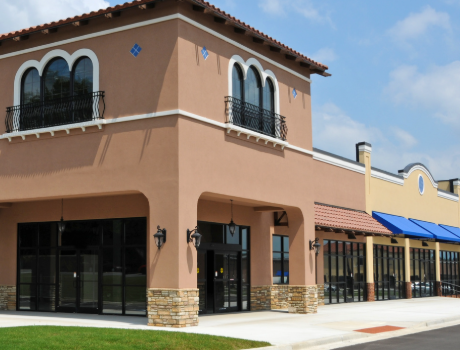
When evaluating a real estate investment, understanding the difference between levered and unlevered cash flow is crucial. These two types of cash flow play a significant role in determining the returns on an investment, influencing how investors approach financing and evaluate potential deals. This article will break down the key differences between levered and unlevered cash flow, and explain how each impacts return metrics like Internal Rate of Return (IRR) and Cash-on-Cash Return.
What is Unlevered Cash Flow?
Unlevered cash flow represents the total cash that a property generates before any loan payments are made. It’s a useful measure of a property’s operational performance, providing insight into the income produced by the property after covering operating expenses, but excluding the effect of debt.
This metric allows for direct comparisons between properties without considering the impact of financing. For instance, two properties might produce the same unlevered cash flow, but one could have a mortgage with higher payments. By focusing on unlevered cash flow, you can evaluate the property’s ability to generate income without the influence of debt.
What is Levered Cash Flow?
Levered cash flow, on the other hand, takes debt into account. It refers to the amount of cash a property produces after covering operating expenses and making debt service payments (loan repayments). In commercial real estate, investors often use leverage (borrowed money) to finance property acquisitions. This means that the initial equity investment is smaller, and the returns on the investor’s equity are magnified.
Levered cash flow is crucial for understanding the true profitability of an investment after debt payments. The more debt used in the purchase, the greater the potential returns (or losses) for the investor. Levered cash flow helps investors decide how much debt to place on a property to achieve the desired return.
Levered vs. Unlevered Cash Flow in Return Calculations
These two types of cash flow are often used to calculate essential investment metrics like Internal Rate of Return (IRR) and Cash-on-Cash Return.
Internal Rate of Return (IRR)
IRR is the annual return that sets the net present value (NPV) of the property’s cash flows to zero. It’s a key metric used to assess the profitability of an investment over time. While the formula to calculate IRR can be complex, most investors use spreadsheet tools like Excel to simplify the process.
Cash-on-Cash Return
Cash-on-Cash Return measures the annual return on the actual cash invested. It’s calculated by dividing the cash received in any given year by the total cash invested. For instance, if an investor puts in $100,000 and receives $10,000 in the first year, the cash-on-cash return is 10%.
Example: Levered vs. Unlevered Cash Flow in Practice
To see how these concepts apply, let’s look at an example. Suppose an investor in New York is considering purchasing a commercial property for $1,000,000. The investor secures a loan for 75% of the purchase price, or $750,000, leaving them with an equity investment of $250,000. They create a pro forma that projects the following cash flows over a 10-year period.
Unlevered Cash Flow
In the unlevered scenario, the investor pays the full $1,000,000 upfront with no loan. The cash flow in Year 0 would be a negative $1,000,000, representing the initial investment. The property generates operating income, and after accounting for operating expenses, the unlevered cash flow is calculated. In Year 10, the investor receives both income from operations and proceeds from the sale of the property. The unlevered IRR for this scenario is calculated at 9.89%, with an average cash-on-cash return of 20.62%, skewed higher by the sale proceeds.
Levered Cash Flow
In the levered scenario, the investor only needs to contribute $250,000 of equity, with the rest of the property financed through the $750,000 loan. After making loan payments, the cash left for the investor is lower than the unlevered cash flow. However, the levered IRR is higher—at 12.44%—because the investor is earning a higher return on a smaller equity investment. The cash-on-cash return for this scenario averages 23.60%, boosted by the leverage used to finance the property.
Key Takeaways
- Unlevered Cash Flow measures a property’s ability to generate income before debt is factored in, and is useful for comparing properties on an operational basis.
- Levered Cash Flow accounts for debt payments and shows the actual cash flow left for the investor after paying loan obligations. It is important for evaluating the impact of leverage on investment returns.
- IRR and Cash-on-Cash Return are key metrics derived from levered and unlevered cash flow, used to assess the profitability and efficiency of an investment.
- In a levered scenario, the returns may be higher due to the use of debt, but this also increases the risks associated with the investment.
Conclusion
Understanding the difference between levered and unlevered cash flow is essential for real estate investors, as it helps determine the true profitability of a property. Levered cash flow can amplify returns due to the use of debt, while unlevered cash flow provides a clearer picture of a property’s operational success without the influence of leverage. By considering both metrics, investors can make more informed decisions when evaluating commercial real estate opportunities.









